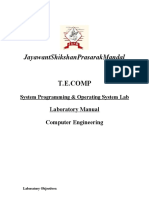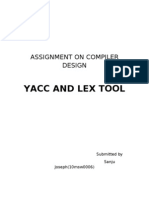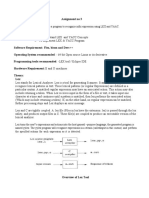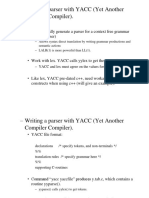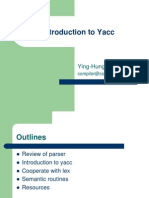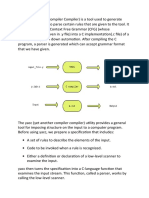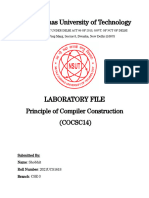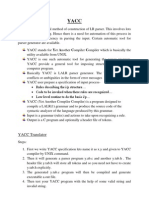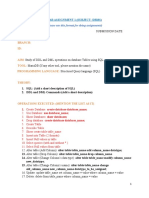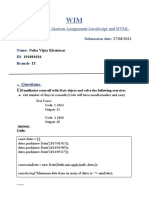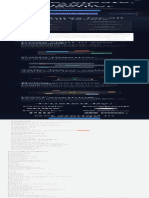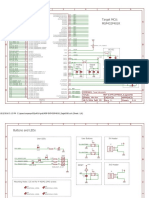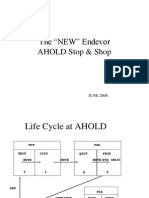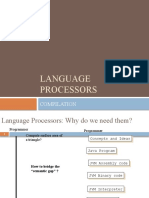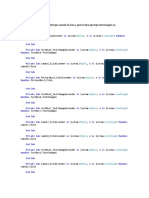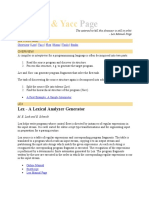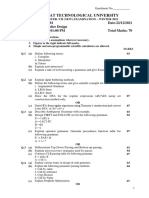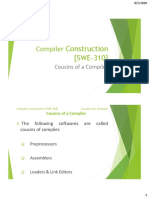0% found this document useful (0 votes)
115 views8 pagesCompiler Design Assignment Lexical Analysis: 30/08/2021 Neha Vijay Khairnar 191081036 IT
Neha Vijay Khairnar wrote a LEX code and YACC code to detect tokens and syntax in a compiler design assignment. The LEX code detects datatypes, variable names, operators, numbers, and other tokens. The YACC code detects the syntax of variable declarations with different data types like int, float, char, and boolean. Both codes were tested and able to correctly identify syntax in sample inputs. Overall, the problem statement of writing LEX and YACC codes for syntax analysis was achieved.
Uploaded by
Krishna AsharCopyright
© © All Rights Reserved
We take content rights seriously. If you suspect this is your content, claim it here.
Available Formats
Download as DOCX, PDF, TXT or read online on Scribd
0% found this document useful (0 votes)
115 views8 pagesCompiler Design Assignment Lexical Analysis: 30/08/2021 Neha Vijay Khairnar 191081036 IT
Neha Vijay Khairnar wrote a LEX code and YACC code to detect tokens and syntax in a compiler design assignment. The LEX code detects datatypes, variable names, operators, numbers, and other tokens. The YACC code detects the syntax of variable declarations with different data types like int, float, char, and boolean. Both codes were tested and able to correctly identify syntax in sample inputs. Overall, the problem statement of writing LEX and YACC codes for syntax analysis was achieved.
Uploaded by
Krishna AsharCopyright
© © All Rights Reserved
We take content rights seriously. If you suspect this is your content, claim it here.
Available Formats
Download as DOCX, PDF, TXT or read online on Scribd
/ 8
